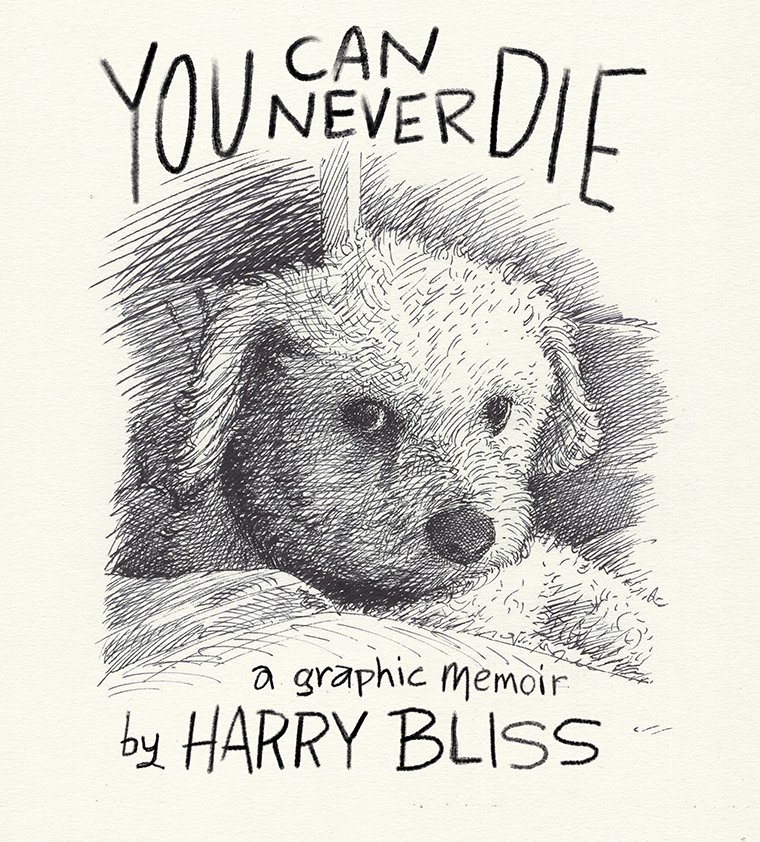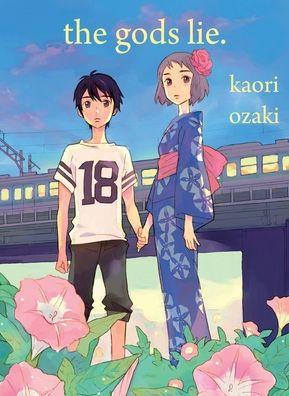A picture is worth a thousand words, right? Spanning memoir to fantasy and everything in between, the graphic novel is an illustrated mode of storytelling that expands the way we experience literature. But what is it, exactly, that transforms a narrative into a graphic novel? The answer isn’t as straightforward as you might think, but we’re here to draw it out for you.
Join us as we delve into the story of the graphic novel, tracing its origins and highlighting a few of our favorite works, from brilliant classics like Watchmen and the Pulitzer Prize–winning Maus by Art Spiegelman to profound new works like You Can Never Die by New Yorker cartoonist Harry Bliss.
What Is a Graphic Novel?
A true definition of “graphic novel” is bit hard to pin down, and you might get a different answer depending on whom you ask. In its simplest form, a graphic novel is book-length work of literature that presents its narrative through a sequenced series of illustrations and text.
What’s important to remember is that “graphic novel” is an umbrella term; it refers to a format, rather than a one single genre of writing. And although we may have a specific idea of what constitutes a “novel,” graphic novels actually come in a range of subgenres and styles, including works of both fiction and nonfiction.
What’s the Difference Between a Comic and a Graphic Novel?
Isn’t that just a comic book? you might ask. And you’d be close, but not quite.
Although both comic books and graphic novels use artwork to convey their narratives and employ a paneled, strip-style layout, they do have their differences. Comic books are periodicals and are generally shorter narratives released in serialized, chapterlike installments. Graphic novels, on the other hand, are book-length stand-alone stories.
It should be noted, though, that some authors of books categorized as graphic novels will refer to their works as “long comic books” or just “comic books.” This is especially true of authors who originally published their work in serialized issues that were later compiled into a single volume — or authors who bristle at the “graphic novel” label (more on that later).
A Brief History of the Graphic Novel
Since the definition of “graphic novel” isn’t universally agreed upon, it’s hard to say just when the format officially popped into existence. The term itself, though, first appeared in an essay by fan historian Richard Kyle in the November 1964 issue of the comics fanzine CAPA-Alpha.
The term picked up popularity in the comics community in the 1970s and then spread into usage among the general public in the 1980s, riding the coattails of successful works like Maus by Art Spiegelman, which was published in 1980. The publishing and book community adopted the term in a more official capacity in 2001 when the Book Industry Study Group added it as a category in bookstores.
If you take a step back, however, and turn away from the debate over when the term “graphic novel” rose in prominence, you’ll see that the format itself has been around for quite a long time. Back in 1827, a Swiss caricaturist named Rodolphe Töpffer created what would eventually be translated into the first American example of book-length comic strip storytelling: The Adventures of Obadiah Oldbuck, published in America in 1842. Then, in 1897, the Hearst Syndicate compiled a series of comic strips by cartoonist Richard F. Outcault and published it as a single book. Titled The Yellow Kid, the collection became a bestseller.
Throughout the 1900s, more examples of book-length comics and illustrated stories came out, including a revival of woodcut storytelling, comic strip retellings of classic novels, and so-called “picture novels,” all before the term “graphic novel” entered the lexicon. Ask any fan today which work deserves the title of America’s first contemporary graphic novel, and you’ll be met with a range of opinions, from Stan Lee and Steve Ditko’s Doctor Strange story in Strange Tales #130–146 (1965 to 1966) to Gil Kane and Archie Goodwin’s Blackmark (1971) to Jim Steranko’s Chandler: Red Tide (1976), among others.
Of course, to determine which one was the first, we’d have to agree on a single definition of graphic novel, which is no easy feat. In fact, there are several authors, illustrators, and critics within the comics community who prefer not to use the term “graphic novel” at all, dismissing it outright as an inaccurate descriptor of their work or simply marketing jargon.
Types of Graphic Novels
The graphic novel lends itself to a wide array of stories. Memoirs and biographies, superpowered standoffs, romantic dramas, and clever comedies — you’ll find all of these narratives and more in the graphic novel section of your favorite bookstore.
Because it’s a format and not a genre, graphic novels are often broken down into five major categories: manga, superhero stories, non-superhero stories, personal narratives, and nonfiction.
Manga: This style of Japanese comics is popular all over the world and features a variety of narrative genres, though they are typically somewhere in the realm of fiction. Fantasy, drama, comedy, romance, sci-fi, and the supernatural are all genre types you can expect to find in the manga style.
Superhero stories: With big names like Marvel and DC dominating pop culture, it’s no surprise that superhero stories are a staple within the graphic novel world. With exciting narratives starring vigilantes, villains, and turbocharged protagonists, superhero stories have an understandable appeal. The graphic novel format is particularly effective in bringing these stories to life through an explosion of color and expressive visual action.
Non-superhero stories: This is, quite frankly, a frustratingly broad descriptor that refers to just about any story told in the comic strip format that isn’t about superheroes. Note that since the fourth and fifth types of graphic novels are personal narratives and nonfiction, non-superhero stories are usually fiction.
Personal narratives: Personal narratives are written from the author’s perspective and are autobiographical in nature. You’ll find wonderful graphic memoirs that share the author’s personal experiences, opinions, and considerations. We’ll give you a few examples of some excellent graphic memoirs farther down.
Nonfiction: Nonfiction graphic novels can overlap with personal narratives, using the author’s experiences to explore and comment on a greater theme. More recently, it’s become increasingly common for nonfiction graphic novels to explore history, science, politics, and social issues.
Examples of Graphic Novels

By Harry Bliss
Renowned New Yorker cartoonist and cover artist Harry Bliss recently released a graphic memoir: You Can Never Die — a poignant reflection on the experiences of his life viewed through the memory of his beloved dog Penny. With his compelling artwork, Bliss explores the way we interact with the world and experience all of the joy and heartache it has to offer. Bliss’s new memoir is a perfect distillation of the personal narrative type, offering a candid look at the world through the author’s eyes.

By Steve Martin and Harry Bliss
From celebrated actor Steve Martin, with illustrations by New Yorker cartoonist Harry Bliss, Number One Is Walking offers a behind-the-scenes look into the legendary career of the longtime comedian. Across its pages, Martin shares anecdotes and memories from his decades in the business, which are brought to vivid life by Bliss’s wry and delightful illustrations.

By Alan Moore and Dave Gibbons
A New York Times bestseller, the Hugo Award–winning Watchmen by comic greats Alan Moore and illustrator Dave Gibbons is a prime example of the superhero story type. Set in a dystopian 1980s America, the narrative envisions a world where superheroes have been outlawed and someone is killing them off in a bid to tip society into utter chaos. Though the Watchmen story was originally released as 12 issues in a limited series, it has since been published as a single book that Time magazine calls “a landmark in the graphic novel medium.”

By Art Spiegelman
A Pulitzer Prize winner, Maus by Art Spiegelman is an acclaimed work, often referred to as the greatest graphic novel ever written. Spiegelman’s Maus is a profoundly personal yet universal narrative that explores his father’s experience during the Holocaust. In this story, however, Jewish people are depicted as mice while the Nazis are cats. Interspersed in the author’s harrowing family history are his own reflections on his relationship with his father and the lasting effects of generational trauma.

By Alison Bechdel
Alison Bechdel’s Fun Home is a critically acclaimed LGBTQ+ memoir released in 2006 that’s considered a groundbreaking contribution to this style of narrative. In Fun Home, Bechdel digs into family secrets, unpacking her relationship with her late father — an aloof yet demanding funeral home director — with rich storytelling and skillfully wielded humor.

By Kaori Ozaki
The Gods Lie, written and illustrated by Kaori Ozaki, follows two sixth graders as they grow closer over a summer. Instead of going to soccer camp like he’s supposed to, Natsuru spends his summer vacation with his new friend Rio and Rio’s little brother at their house — but there’s a dark truth to this story that could change everything for the young students. Originally published as a short series in a manga magazine, The Gods Lie has since been compiled into a stand-alone graphic novel.
There you have it! Graphic novels are a dynamic form of storytelling that span genres as they pack a literary punch with a visual pop. The next time you’re at your local bookstore, take a look at the graphic novels section — you’re sure to love what you see.



